Department of Mechanical and Electrical Engineering
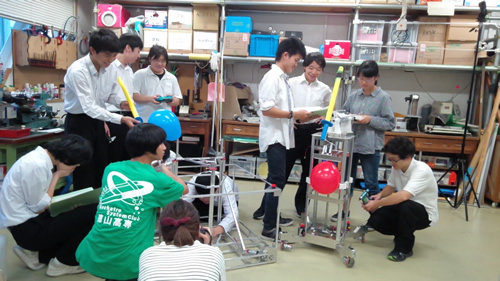 Mechanical and Electrical Engineering is the basis for all industries and for our lives. Our department provides extensive training in Computer Science subjects as well as in Mechanical, Electrical and Electronic Engineering subjects.
Mechanical and Electrical Engineering is the basis for all industries and for our lives. Our department provides extensive training in Computer Science subjects as well as in Mechanical, Electrical and Electronic Engineering subjects.
Our department offers subjects which cultivate students’ creativity, and inspire students to be imaginative engineers with applicable ability.
Features of Curriculum
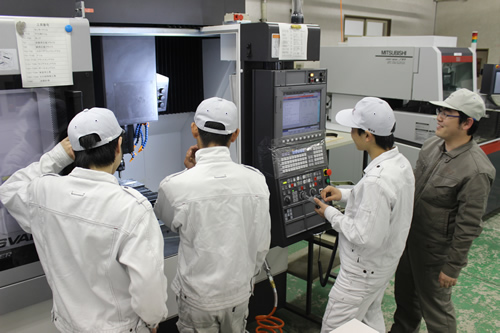 Students in Department of Mechanical and Electronical Engineering are expected to become a creative mechatronics engineer. To become such an engineer, they are required to master two important abilities: one is to face challenges, and the other one is to solve various problems. We offer “Creation and Research Practice” and “Creative Production” subjects for students to acquire those significant skills.
Students in Department of Mechanical and Electronical Engineering are expected to become a creative mechatronics engineer. To become such an engineer, they are required to master two important abilities: one is to face challenges, and the other one is to solve various problems. We offer “Creation and Research Practice” and “Creative Production” subjects for students to acquire those significant skills.
Our department curriculum focuses on essential subjects to master indispensable techniques and knowledge for mechanical and electrical engineering.
Main Facilities for Education and Research
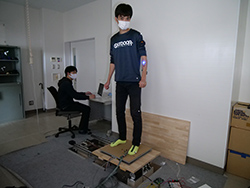
Biologocal Cybernetics Laboratory
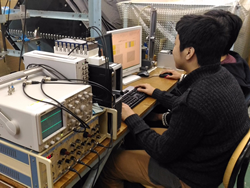
Fluid Mechanics Laboratory
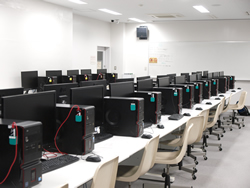
Computer 3D-CAD Room
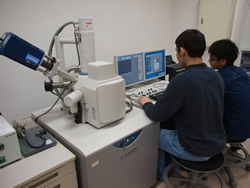
Material-strength Test Laboratory
Department of Computer Science and Electronic Engineering
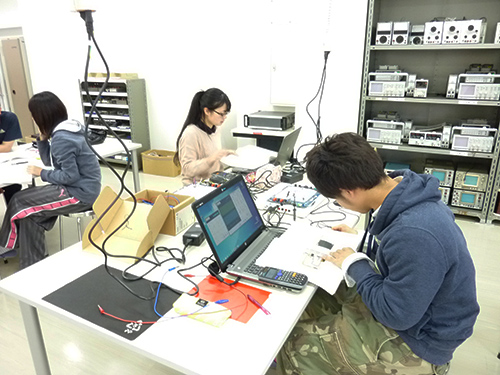 Our educational philosophy is to cultivate every student as a reliable and creative engineer who has a sufficient foundation in terms of “technology”, “ability” and “humanity”. The curriculum we offer supports students to learn the technological basis for various computer systems, which includes the followings:
Our educational philosophy is to cultivate every student as a reliable and creative engineer who has a sufficient foundation in terms of “technology”, “ability” and “humanity”. The curriculum we offer supports students to learn the technological basis for various computer systems, which includes the followings:
(1)Computer hardware and computer software technology
(2)Application software and man-machine interface technology
(3)Communication and network technology
(4)Electronics, sensor and control technology
The students can systematically learn the subjects in the technology fields shown above and then they will enhance their fundamental knowledge by practicing various experiments, exercises and graduation research. We assure that each student will be a reliable and creative engineer in the future.
Features of Curriculum
 The curriculum of CSEE department contains both subjects of computer science and electronics. That is, students can study about the up-to-date computer software technology and the hardware at the same time.
The curriculum of CSEE department contains both subjects of computer science and electronics. That is, students can study about the up-to-date computer software technology and the hardware at the same time.
Main Facilities for Education and Research
(1)Computer System
CSEE students have access to 51 workstations connected to a network. In addition,the 100 Ubuntu Linux virtual machines on the virtual desktop infrastructure can be used from both inside the school and at home through the network.
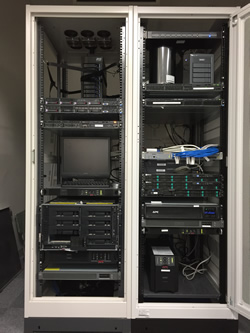
Server Computer
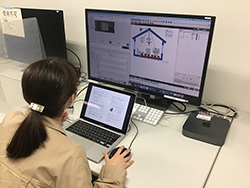
mac OS
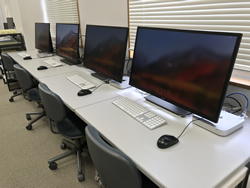
Apple Mac mini
(2)Facilities for System Development
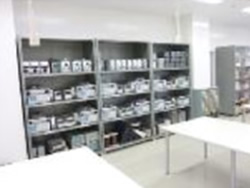
Electronic engineering laboratory
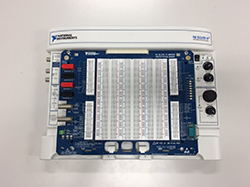
Engineering educational laboratory device
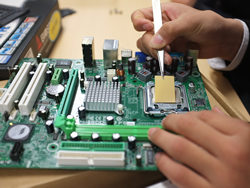
Assembling of a PC
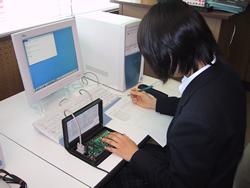
cross development environment for an educational computer
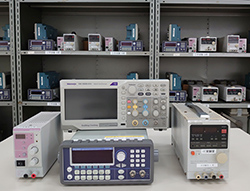
Measurement equipment for electronic engineering experiments

Measurement equipment for electronics and communication sysytem laboratory
Department of Civil Engineering and Architecture
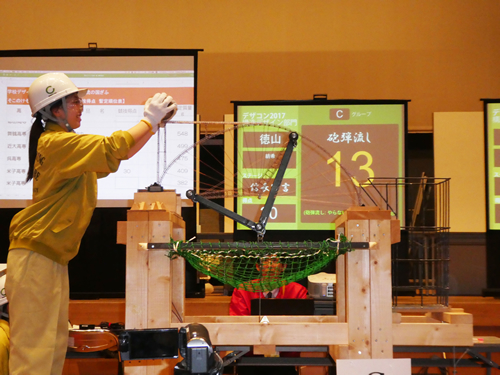 Throughout Japan, we are in the midst of a great undertaking to improve the nation’s infrastructure. Large-scale bridges, expressways, high buildings, wide-spaced structures and offshore airports have been constructed with the use of modern technology. The educational goal of the Department of Civil Engineering and Architecture is to get the students to be able to make full use of “information technologies to design and develop infrastructure and architectural space”. The department provides the students architecture workplace. Students are taught the fundamental principles and modern technology of civil engineering and architecture. In order to gain a firm grasp of the theories, principles and methods, the students perform various kinds of experiments and draw many types of drafts throughout the five-year course. The students also learn about computer programming and applications for civil engineering and architecture. In addition, the students are taught other subjects that are becoming increasingly important, such as environmental protection and construction technology.
Throughout Japan, we are in the midst of a great undertaking to improve the nation’s infrastructure. Large-scale bridges, expressways, high buildings, wide-spaced structures and offshore airports have been constructed with the use of modern technology. The educational goal of the Department of Civil Engineering and Architecture is to get the students to be able to make full use of “information technologies to design and develop infrastructure and architectural space”. The department provides the students architecture workplace. Students are taught the fundamental principles and modern technology of civil engineering and architecture. In order to gain a firm grasp of the theories, principles and methods, the students perform various kinds of experiments and draw many types of drafts throughout the five-year course. The students also learn about computer programming and applications for civil engineering and architecture. In addition, the students are taught other subjects that are becoming increasingly important, such as environmental protection and construction technology.
Features of Curriculum
 After the students have learned the basic subjects in civil engineering and architecture for the first three years, students must then select either the civil engineering program or the Architecture program. Thus, the students in fourth and fifth year select interesting subjects from many elective ones, in the specific areas of civil engineering or architecture.
After the students have learned the basic subjects in civil engineering and architecture for the first three years, students must then select either the civil engineering program or the Architecture program. Thus, the students in fourth and fifth year select interesting subjects from many elective ones, in the specific areas of civil engineering or architecture.
Main Facilities for Education and Research
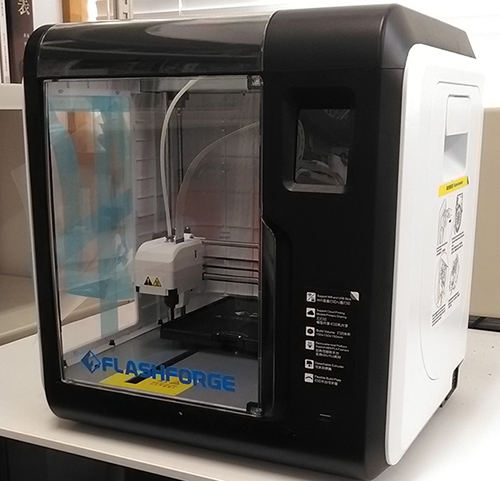
(1)Architecture and Urban Design Laboratory
Three-dimensional printer
The three-dimensional printer can supprot student's creativity and the impression ability be making the flexible design items.
Finally these activities contribute to practical design and local employment support.
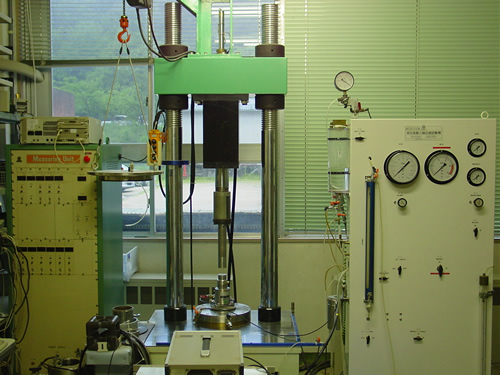
(2)Geotechnical Engineering Laboratory
Multi Triaxial Apparatus
This apparatus is used for research on characteristics of consolidation and shear strength of foundation materials, such as clay, sand, rock, etc.
The maximum load capabilities of this apparatus are 500kN for the vertical axis and 20MPa for the horizontal axis. Using a personal computer, various load conditions are setup, and soil mechanical properties can be investigated under various loads (static loads, such as bearing capacity when supporting a structure, and dynamic loads, such as earthquake, traffic load, etc.)
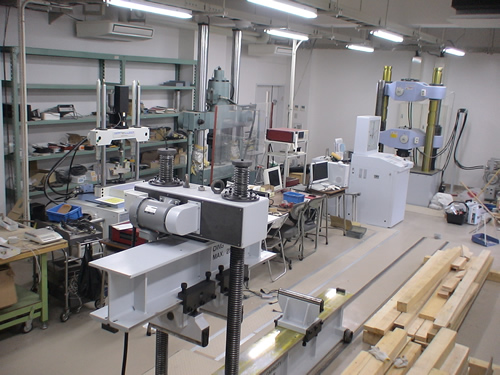
(3)Material Engineering Laboratory
Servohydraulic Testing System, Universal Testing System, Compressive and Bending Testing System.
These systems consist of material testing apparatuses which are used to study the fracture behavior of concrete, rock, wood and reinforced concrete.
There are two servohydraulic testing apparatuses; one has the maximum loading capacity, 300kN for the dynamic loading and 450kN for the static loading, and the other has the maximum loading capacity, 10kN for the dynamicloading and 12kN for the static loading. The maximum loading capacity for universal testing machine and compressive and bending testing machine are 2000kN and 1000kN respectively.

(4)Hydraulics Laboratory
Streamwise view of a vertical structure near wall turbulence of open-channel flow by laser light sheet method.
This picture shows the streamwise view of a vertical structure near wall turbulence. In this flow visualization, a sheet of laser light transformed from 2W Argon ion laser beam was used.
It is known that turbulence production is at maximum value near the wall.
But the cause is not known. Recently, it is clear that this vertical structure plays an important role in the mechanism of turbulence.
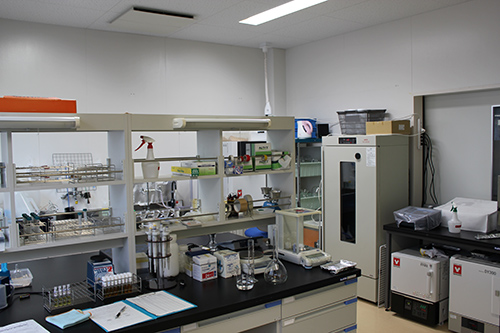
(5)Water Environmental Laboratory
Water .
For the evaluation of water environment,the water quality analyzers can measure various water quality parameters ,such as Chemical Oxygen Demand(COD)or nitrogen compounds concentrantions of river watter,sewage and so on.
Liberal Arts Division
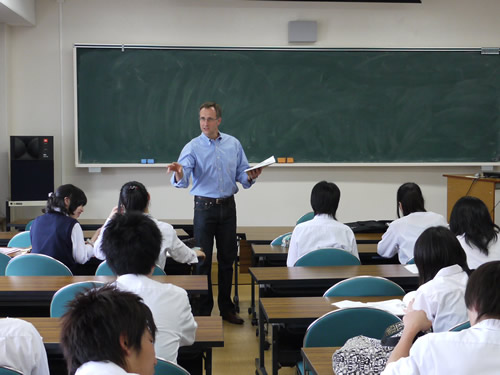 The purpose of Liberal Arts Division is to provide students with well-rounded education. To achieve this aim, we offer basic knowledge of the humanities and academic subjects for students to pursue technology and skill in each field. From the viewpoint of liberal arts education for the 21st Century, we set our main goal as follows; to cultivate students to become an engineer who is willing to contribute to the world with originality and independent spirit.
The purpose of Liberal Arts Division is to provide students with well-rounded education. To achieve this aim, we offer basic knowledge of the humanities and academic subjects for students to pursue technology and skill in each field. From the viewpoint of liberal arts education for the 21st Century, we set our main goal as follows; to cultivate students to become an engineer who is willing to contribute to the world with originality and independent spirit.
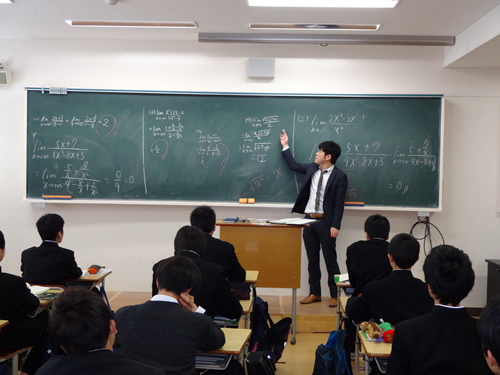 The number of credits required in Liberal Arts division account for 49% of all the credits required for graduation. Students need to take basic subjects by the third grade, and they must take advanced ones for the last two years.
The number of credits required in Liberal Arts division account for 49% of all the credits required for graduation. Students need to take basic subjects by the third grade, and they must take advanced ones for the last two years.
Since 1987, we have organized mixing classes with the 1st year students of all the majors to put importance on diversity, so that they have chance to exchange their ideas or opinions not only with friends of the same major but also of different majors. Also, we have teachers who are native speakers in English classes, and English conversation class is just right size for all the students to have an opportunity to speak during the class.
